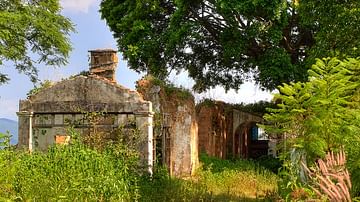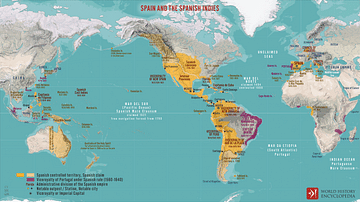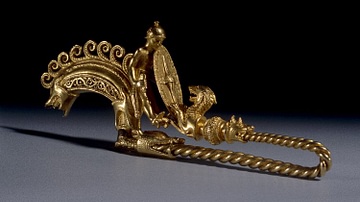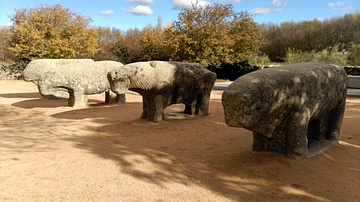Search
Search Results

Interview
Interview: Living in Silverado: Secret Jews in the Silver Mining Towns of Colonial Mexico
Professor Emeritus David Gitlitz is one of the world’s leading experts on Jewish-Catholic interactions in Iberia and the Americas. While initially drawn to the literature of the Spanish Golden Age as a student at Oberlin and Harvard, the...

Image
Spanish Conquest & Exploration in North America in the 16th century
A map illustrating Spain’s drive to expand its empire following the 1492 Reconquista of the Iberian Peninsula and Columbus's discovery of America. Inspired by tales of land and instant riches, thousands flocked to the New World with hopes...

Image
The Phoenician Expansion c. 11th to 6th centuries BCE
A map illustrating the expansion of the Phoenicians, including the trade routes and process of Phoenician colonization, from its origins in the Levant region of the eastern Mediterranean, until its height when it spanned from Cyprus to the...

Image
Spain and the Spanish Indies
A map illustrating one of the most significant processes of the early modern period - the rise and decline of Spain between the late fifteenth and the late seventeenth centuries. From a patchwork of kingdoms in the north of the Iberian peninsula...

Image
The Roman Republic before the Mithridatic Wars, c. 90 BCE
A map illustrating the geopolitical landscape in the Mediterranean on the eve of the Mithridatic Wars (88 - 63 BCE). The aftermath of the Punic Wars had left Rome the dominant power in the Mediterranean - with Roman rule extending from the...

Image
Roman Bridge, Ponte da Vila Formosa, Portugal
Ponte da Vila Formosa in Portugal, a 116 meter long Roman bridge spanning over the river Seda. This bridge, dating to the late 1st century / early 2nd century CE, is one of the best-preserved bridges throughout the Iberian Peninsula. It was...

Image
Braganza Brooch
A 3rd Century BCE gold fibula depicting a Celtic warrior. A Celtic warrior with a sword, oval shield, and pointed helmet is depicted defending himself from a dog which is jumping on him, two other dog heads are on each end of the fibula...

Image
Wall Painting of a Swan in the House of Fortune, Carthago Nova
Roman fresco depicting a swan in the tablinum of the House of Fortune in Carthago Nova (modern-day Cartagena), a city on the southern Iberian Peninsula, Spain. The house dates to the late 1st century BCE and was occupied until the late 2nd...

Image
Verrco Sculpture from Ancient Iberia
This verraco of a pig is made of granite and dates from the 3rd-1st century BCE. It was created by members of the Vettonian culture of ancient Iberia and was found in the Spanish province of Ávila. Verracos were sculptures of male beasts...

Image
The Bulls of Guisando
The bulls of Guisando are four zoomorphic sculptures carved in stone and located in the Ávila region (Spain). These bulls were carved by the Vetonians, one of the Celtic peoples who lived on the Iberian Peninsula before the Roman conquest...